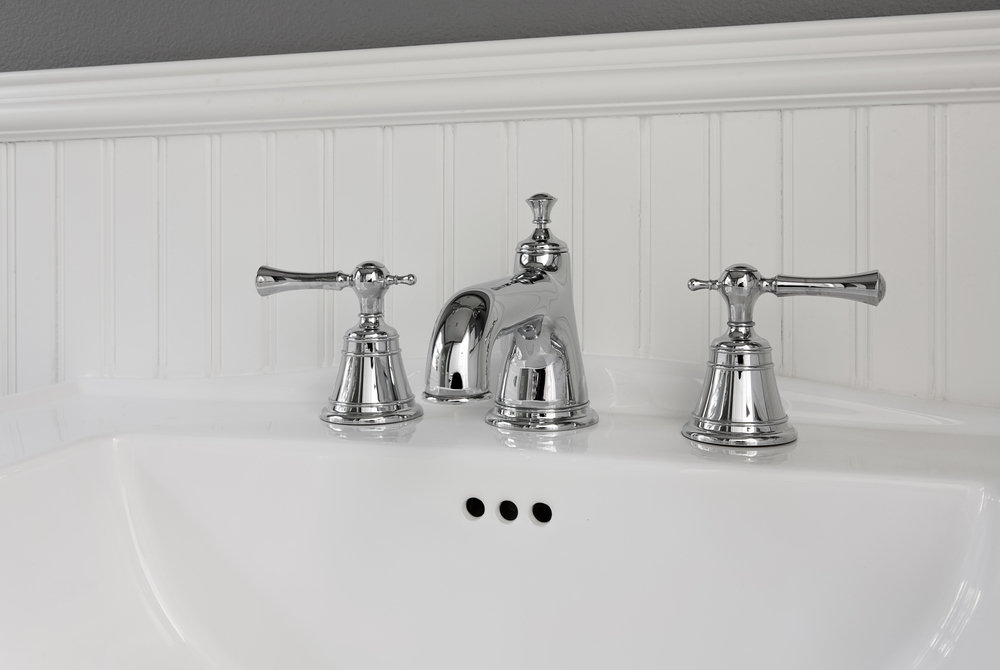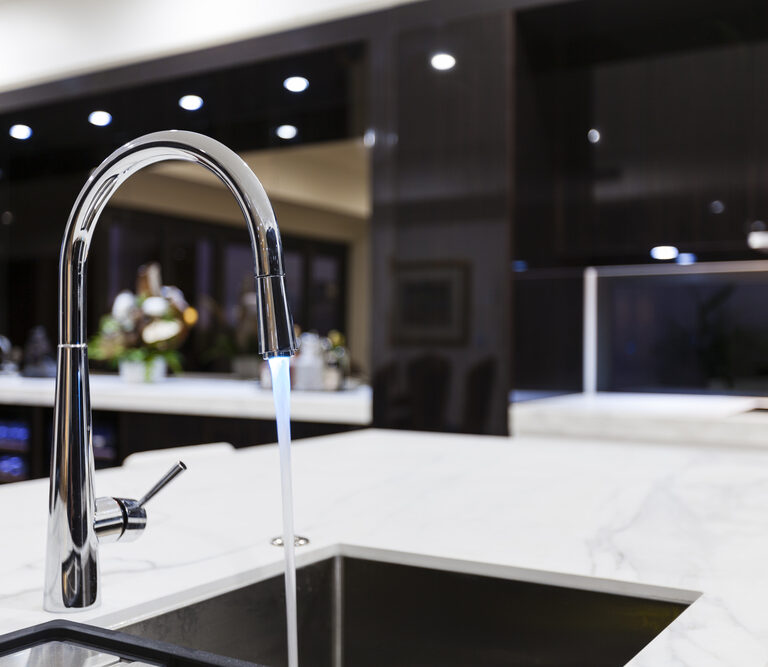Despite trends in interior design toward brass, gold, or matte black finishes, products with chrome and brushed nickel finishes remain popular and, indeed, could be considered timeless, as they just never seem to go out of style.
Whether it’s for a major renovation or simply a refresh of the style in a kitchen or bathroom, changing out a faucet or cabinet handles can make a huge impact, even if the choices are between relatively neutral options like chrome or brushed nickel. Let’s take a look at what you need to know to make a smart design choice between these two popular finishes.
How They’re Made
One big thing chrome and brushed-nickel finishes have in common is that they’re both applied to the surface of a different type of metal through a process called plating.
That means that, for example, a chrome faucet and a brushed-nickel faucet in the same style from the same manufacturer will have the same material underneath the surface of the finish. In the case of these two examples, that base material is brass, which is having its own moment right now.
While nickel is used in manufacturing certain types of items (batteries, for instance), the high cost makes it impractical for use in household fixtures. And chrome-plating is done by applying a thin layer of the chemical element chromium to a surface, so on its own, chrome isn’t a solid material at all.
What that means is that regardless of the finish you choose, the underlying material is likely to be brass, stainless steel, zinc and zinc alloys, or even plastic. These materials are popular for the body of plumbing fixtures, cabinet handles, and other hardware thanks to their durability, and plating them with chrome or brushed nickel allows designers to create unique-looking materials.
Colors & Tints
Another big area of overlap for chrome and brushed nickel is that it’s fair to classify them both as gray or silver in color. Of course, there’s far more nuance to these finishes than that, but if you’re looking for a silver faucet, either of these would probably fit the bill. While they have similar colors, the differences in appearance between the two are obvious at a glance.

Chrome is shiny and reflective. You’ll probably see a distorted image of yourself looking back if you get close enough. Brushed nickel, on the other hand, is still shiny but is much less reflective and has a more matte finish. That’s because of the process used to create the brushed effect, which involves applying a wire brush to the material during the plating process. Nickel also is by its nature less shiny than chrome, and the manufacturing process used to create the brushed finish varies by manufacturer. That means brushed-nickel products have more variety than chrome.
The inherent differences in the two finishes as well as the warm vibe given off by brushed-nickel finishes means they are best used in differing color palettes.
Chrome’s cool undertones make it ideal for décor styles that are heavy on blues and greens, while brushed nickel is more at home with warm colors like reds and yellows. While chrome waned slightly in popularity during the 1990s, it’s making a comeback, and it’s especially popular in modern minimalist design, while brushed-nickel finishes can support a lived-in aesthetic thanks to their texture.
Location & Use Matter
Both types of finishes are quite durable, which is why they remain popular across many types of uses. That said, there are smart uses and less-smart uses, and the choice may come down to maintenance.
Brushed nickel is better at hiding things like fingerprints and the normal wear-and-tear of daily use, so if you’re considering a chrome finish for something that will be touched many times every day, you should be ready to fight the fingerprint war.
That’s not to say brushed nickel is maintenance-free; in fact, if brushed nickel is used in a very humid area, such as a bathroom, it can develop a tarnish that makes the finish look dull.
Chrome finishes also are more susceptible to minor dings and dents, as chrome is a softer material than nickel. That means it’s necessary to handle chrome finishes with a softer touch when cleaning them, which is another reason not to use this type of finish on every possible surface.
In both cases, it’s best to avoid harsh or abrasive cleaners, as you risk removing or damaging the finish. Both materials can hold up to gentle, regular cleanings, which can prevent tarnish or corrosion. (Check out these tips for cleaning chrome finishes, and learn how to avoid corrosion on a brushed-nickel faucet.)
Price Differences
Because of the surging popularity of trendy finishes like oil-rubbed bronze, matte black, or polished brass, chrome and brushed nickel are likely to be more affordable options. In decades past, brushed-nickel finishes were considered the more luxury option, but they’ve become standard and price differences between similar items from the same manufacturer are likely to be small to none.
Tips for Choosing Metals
Sophisticated design doesn’t mean using one type of metal finish all over the place; in fact, switching up finishes is recommended to create a cohesive design. And while there aren’t any hard-and-fast rules, there are several tips that can help you pick the right metal finish for the job, where it’s brushed nickel, chrome, or something else:
- Pick a dominant finish: This is especially important in designing a kitchen or bathroom, where you’re likely to have metal finishes in just about every quadrant of the room. Choose one finish for the most dominant elements in the room.
- Use a few finishes at most: Once you’ve settled on the dominant finish in the room, ensure that appears on about half to two-thirds of the applicable surfaces and then use one or two other finish on select pieces to complement the dominant finish. You want to avoid having finishes compete with each other, so you can create a harmonious look.
- Think about all finishes and colors: As we mentioned, chrome goes well with cool colors, while brushed nickel is ideal for spaces that have warm tones, so be sure to take the entire room into account and consider how your choices of finish will provide a contrast or complement to the overall color palette in the room.
- Be consistent: While chrome pretty much always looks like chrome, brushed nickel can have a great deal of variety depending on the manufacturer, and sometimes brushed-nickel products from the same company can look quite different. So, it’s often wise to purchase a bundle of items at once so you can be sure the brushed-nickel finish is consistent across the lot.
- Consider the use: As we mentioned, chrome does tend to show spots and fingerprints more than brushed nickel, so if you’re averse to constant cleaning and polishing but remain dead set on using chrome, choose products that won’t be touched very often.
The Bottom Line
Chrome and brushed nickel have a great deal in common, from how they’re made to their popularity today. But the two types of metal finishes have different appearances, which means the right choice depends on the look you’re going for. That said, they are both durable, and their staying power means they won’t ever go entirely out of style.
